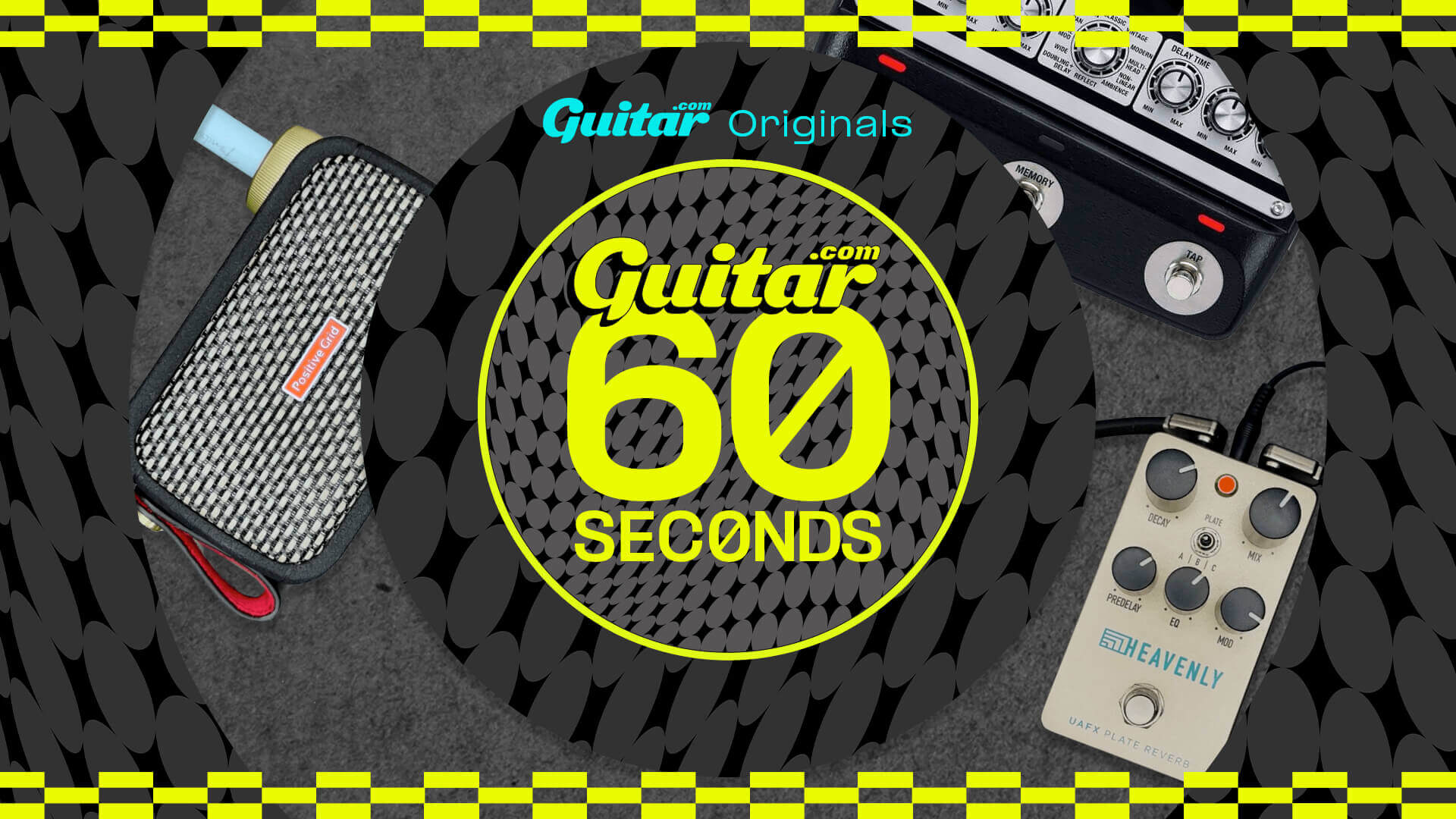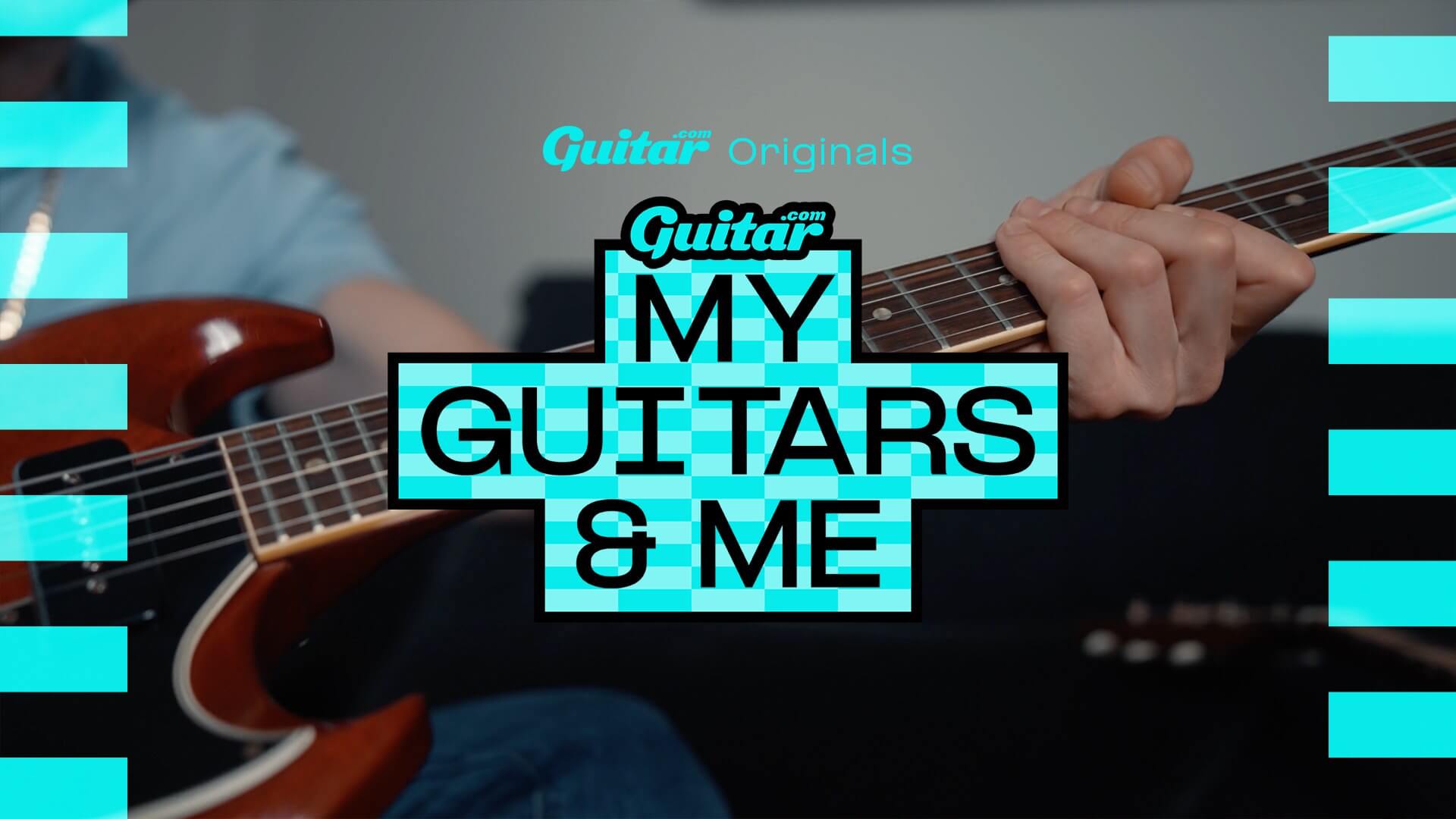A Brief History of Hagstrom Guitars
Sweden’s most iconic guitar brand has its own storied history of rock and roll importance – from Hendrix and Elvis to ABBA.

2013 Hagstrom Viking
Featured in this article
Hagstrom began as a humble instrument shop in Sweden in 1925 that primarily sold accordions, which were imported from builders in Germany and Italy. The company was started by Albin Hagstrom, hence the name, and sales went well in its native land Sweden, meaning that before long the company expanded, opening up shops in Norway and Denmark.
- READ MORE: A Brief History of Jackson Guitars
By 1932, Hagstrom began making its own accordions, a process which was further streamlined in 1936 when Albin hired two Italian accordion builders who were much more familiar with the manufacturing process to do it for him.

Clearly this went well too, as only three years later, the company attempted to create a foothold in the lucrative but competitive American market. Albin started an American office called the Hagstrom Music Company in 1939 out of the iconic Rockefeller Center in New York City.
Sadly, the start of the Second World War put a halt to Albin’s ambitious plans for US expansion, and much of the money he’d invested into the project was ultimately lost as a result. Undeterred, Hagstrom continued to grow following the war and by the 1950s the company had expanded to a chain of 48 shops across Sweden, Norway and Denmark, primarily focused on accordions.
By this point, the company had become a household name for accordions in Scandinavia, and even opened up several schools to teach accordion and other instruments. In 1953, the brand also had its best year for accordion production, with 15,000 units being built – by this point it was one of the biggest accordion manufacturers in the world, and had even established a factory in the US in 1946, in Jamestown, New York.
Hagstrom would continue to produce accordions until about 1970, but Albin Hagstrom would not live to see his company’s full bloom – he died of sepsis at the age of just 42 in 1952.
Despite the setback of losing its inspirational founder, Hagstrom continued to thrive and evolve, particularly under the stewardship of Albin’s son Karl Hagstrom, who began working with the company in 1956.

Guitar Star
During the 1950s, the popularity of the accordion had faded, and a new instrument was on the rise following the advent of rock and roll – the electric guitar. Hagstrom began producing electric guitars in 1958, and was one of the first companies to take on large scale guitar production outside the United States.
The first model the company produced was the DeLuxe [although they were sold in the US under the name Goya], which was somewhat similar in in body shape to a Les Paul. Hagstrom was a Scandinavian distributor for Gibson guitars at the time – along with many others brands – and allegedly lead designer Holger Berglund and his assistant Arne Hårdén started to design the first Hagstrom electric guitar by taking apart a Gibson Les Paul Goldtop.
The first run of guitars was covered with pearloid plastic on the body and neck, while the top was generally done in sparkle colors, where they cleverly incorporated accordion parts into the design to save on production costs. These guitars commonly had a drop in frame that consisted of two single coil pickups encased in a metal frame in gold or silver foil. The top of the frame featured four push button tone controls, as well as two pots. These would become interchangeable between many of the earlier Hagstrom models.

This may have looked flashy but it also served another purpose. Customs fees into the US were cheaper for acoustic instruments, so the guitars were shipped separately from their electronics, making them, technically, acoustic instruments. Then once they arrived, the electronics would be dropped into the body and then sold as an electric guitar.
Between 1962 and 1966, Hagstrom also built guitars that were sold under another brand names. One being Kent. Allegedly the reason why these Kent guitars didn’t bear the Hagstrom name was because Karl Hagstrom was worried that the acrylic-top pickguard/electronic assembly would crack, so he did not want the Hagstrom name on this product.
The Kent-branded guitars looked much more like a Fender Stratocaster, and those guitars sold well – Hagstrom was also able to produce these in higher quantities due to their simpler build in production compared to their own Hagstrom models.

The Boom Years
The 1960s brought an unprecedented rise in guitar sales, largely thanks to the Beatlemania craze. In the 1960s, Hagström built approximately 7,000 guitars a year, of which 90 per cent were exported – primarily to the USA.
1966 was a peak year for Hagstrom during that era when sales reached 16,660 for electric guitars and 5,800 for electric basses and lead time for delivery exceeded one year. While Beatlemania was an obvious factor, Hagstrom had also inked a deal in 1964 to source fretwire from the same supplier that Gibson used. This would have a material impact on Hagstrom’s guitars – the new wire meant that the necks became thinner, the frets became larger and as such more playable.
In this era the Hagstrom I and II got a new body shape, and in 1967 the brand came out with what is widely believed to be the world’s first mass produced eight-string production bass – the Hagstrom H8.

Noel Redding of The Jimi Hendrix Experience famously used this new bass on Axis Bold As Love the very same year. Hagstrom got a further boost in popularity when Elvis Presley was seen using a Viking II in 1968 on his televised comeback special, just three years after the Hagstrom Viking’s debut.
Hagstrom by this point had established factories in Älvdalen, Falun, Orsa and Stockholm in Sweden, Helsinki in Finland, Darlington in England, Copenhagen in Denmark and a guitar factory in Oslo, Norway. What’s more, Hagstrom had also become one of the largest distributors/wholesalers in Scandinavia with brands such as Gibson, Fender, Korg, Pearl and Ampeg on board. Hagstrom would continue to act as a distributor in Norway well into the 1990s.
The final big moment for Hagstrom in this golden era was in 1970 when it introduced a new model – the Swede. This guitar again borrowed some design characteristics from the Les Paul, but it would become iconic as the instrument of choice of Björn Ulvaeus, of ABBA.

Decline and rebirth
By the 80s, Hagstrom’s guitar business was suffering as the shred boom changed the shape of the guitar industry and Asian makers made life difficult for Western companies to compete – in 1983 Hagstrom ended Swedish production, following many of its rivals by attempting to switch over to Asian production.
But ultimately the quality of these guitars was not up to par with what the company wanted, and they made the decision to wind up the guitar business rather than compromise the reputation Hagstrom had built as a maker of fine instruments.
The brand remained defunct for 22 years until their inevitable relaunch in 2005. In the ensuing years, Hagstrom Guitars were used by bands like Nirvana, Dweezil Zappa, Queens of the Stone Age, and many others.
Today, Hagstrom thrives as a high-quality builder which includes artist-inspired models for Pat Smear (Foo Fighters, Nirvana) and Ghost amongst a few models throughout their range. Hagstrom guitars are typically manufactured in various locations and factories worldwide, contingent on the specific series or model. However, one thing that remains constant since its beginnings nearly 100 years ago, is an unwavering commitment to upholding their stringent standards of quality and ensuring great value for the working musician.





